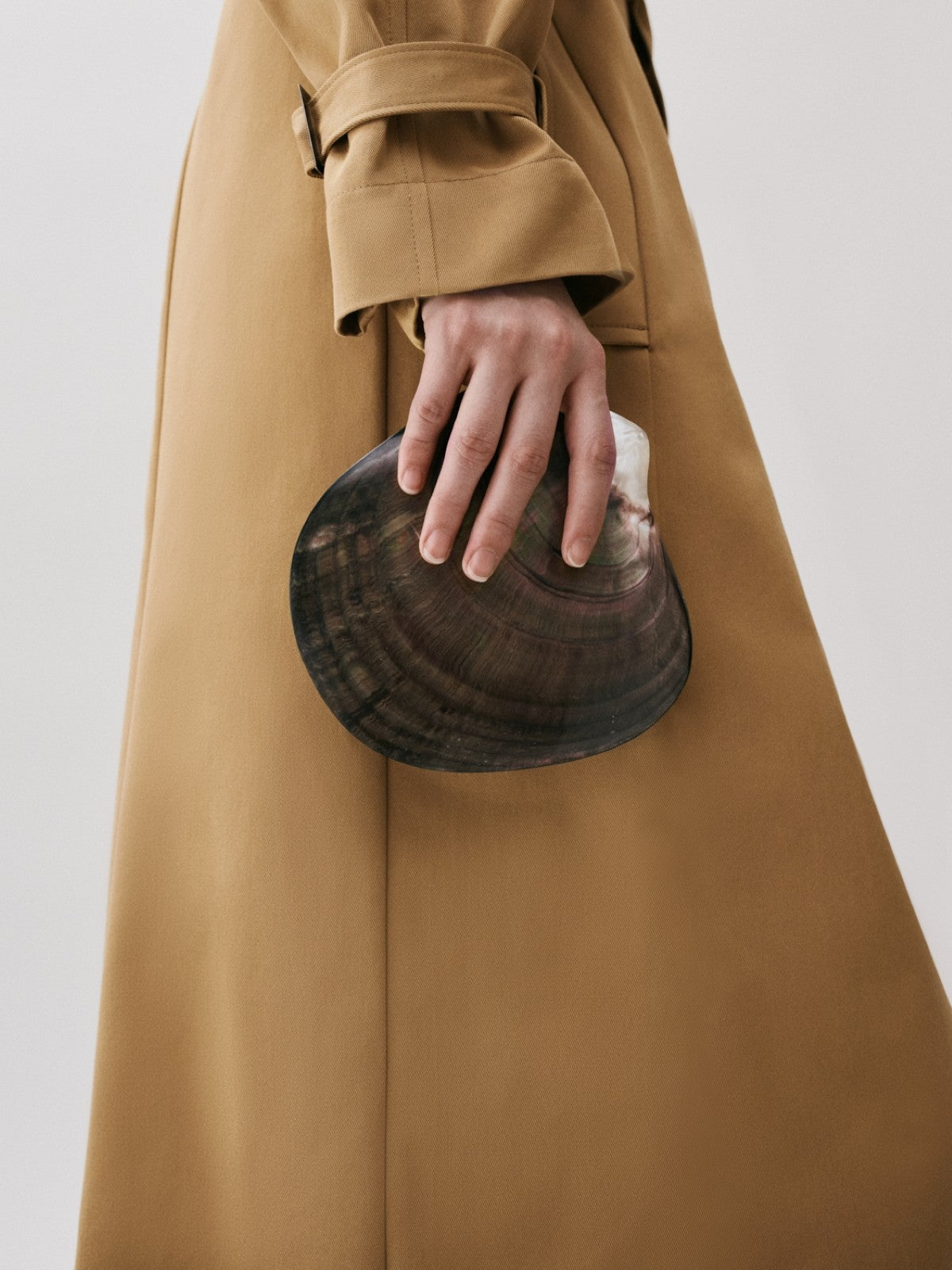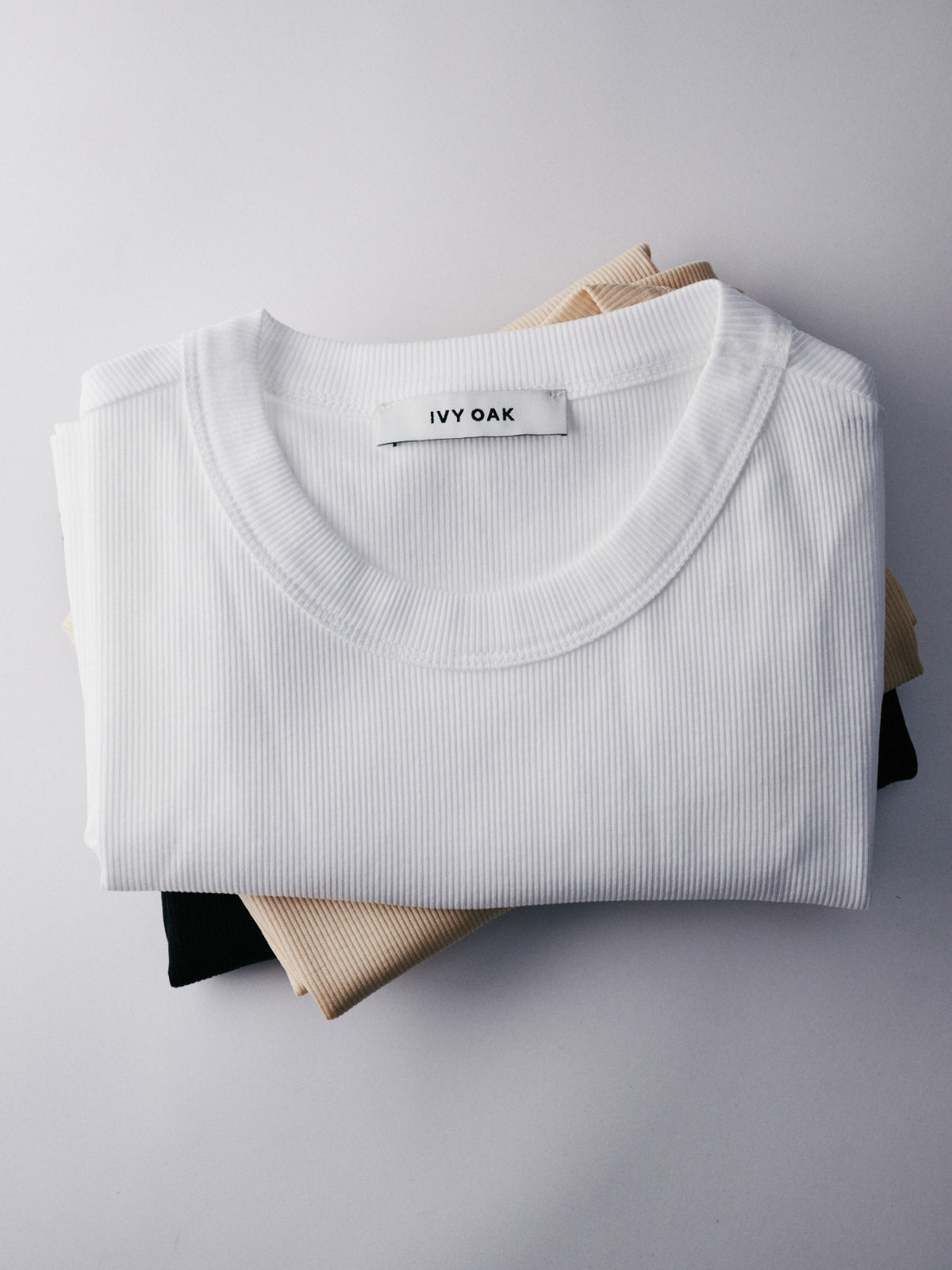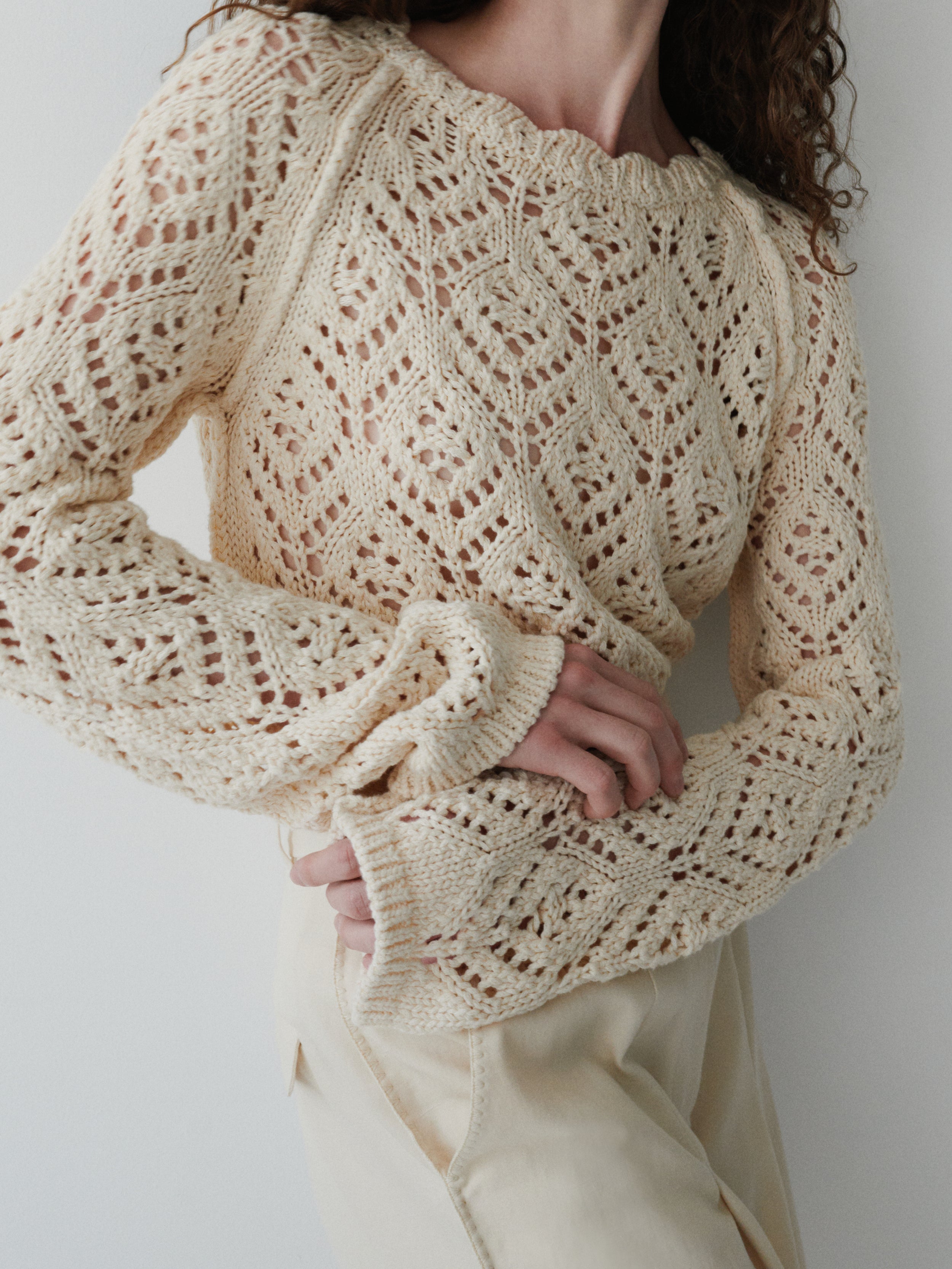INTRODUCTION
At IVY OAK, we are deeply committed to creating products that align with our values of sustainability, quality craftsmanship, and ethical production.
In this report, we offer a transparent look into our Spring/Summer 2025 collection — from the materials we’ve chosen and where our products are made to the measures we take to ensure responsible practices throughout our supply chain. We also highlight our environmental impact, social initiatives, and future goals as we continue to move forward on our path toward greater sustainability.

MATERIALS & INNOVATION
Driving progress through responsible fibre choices
In our Spring/Summer 2025 collection, we continued to refine our approach to material sourcing in line with our sustainability goals. Our material mix shows a clear move toward natural, certified, and lower-impact fibres compared to previous seasons:
- Organic Cotton now makes up 57% of our total material usage — more than double the share in S/S 2024 (28%) and a remarkable increase from just 4% in S/S 2023.
- All denim pieces in the S/S 2025 collection have been made exclusively from organic cotton.
- Additionally, 100% of knitwear styles in our main S/S 2025 collection also consist of organic cotton only.
We’ve also expanded our use of certified and responsibly sourced materials, including LENZING™ ECOVERO™, NAIA™ acetate, and RWS-certified wool, while further reducing synthetic fibres such as polyester and polyamide to their lowest levels across recent collections.
These changes are part of our ongoing efforts to work with renewable materials, source more responsibly, and reduce dependence on fossil-based fibres — all of which play a role in our long-term sustainability approach.
For a closer look at our careful fabric selection process and the materials we use, explore our Fabrics page.

DEEPENING OUR MATERIAL COMMITMENT
Sourcing smarter, with sustainability in focus
In our S/S 2025 collection, we have made notable progress in aligning with our Preferred Material Framework - particularly in our fibre choices.
Plant-based fibres make up the majority of our material mix at 70%, reflecting our continued focus on renewable resources. Manmade cellulose fibres account for 15%, while synthetics have decreased to 8%. Animal fibres represent 7% this season — a proportion influenced by the lighter product types typical of Spring/Summer collections.
In line with the sustainability categories defined in our Preferred Material Framework, we are committed to gradually increasing the share of Category A and B materials each season — while recognising that the specific material mix in each collection influences the overall ratios. Here is the breakdown for S/S 2025:
- Category A materials — our most sustainable fibres — represent 62% of the collection, up from 52% in the Fall/Winter 2024 collection. This increase reflects the inclusion of certified, low-impact materials such as organic cotton, RWS wool, and responsible cellulosics.
- Category B fibres remain steady at 21%, representing improved options like recycled synthetics and animal fibres with partially more responsible processing.
- Category C materials have decreased to 1%, continuing their downward trend.
- Category D fibres still make up 16%, a reduction from previous seasons, but they remain a key focus for future improvement.
Overall, the Spring/Summer 2025 collection demonstrates a clear shift towards sustainable, plant-based fibres while steadily reducing reliance on non-preferred materials.
Eco-friendly vs. conventional materials

PARTNERS & PRODUCTION
Strengthening Our European Network
Our production strategy remains focused on European manufacturing, underscoring our commitment to local supply chains. By partnering with manufacturers in countries such as Portugal, Bulgaria, Turkey, and Romania, we aim to reinforce the connection between our design and production hubs, fostering greater transparency, accountability, and efficiency.
We also prioritize cultivating long-term, collaborative relationships with our suppliers. Through these partnerships, we not only support regional economies but also ensure that we stay true to our commitment to sustainable practices. We work exclusively with trusted partners who share our values and uphold the highest standards in both manufacturing and materials sourcing.
The following graphs provide a detailed overview of the countries involved in key production stages – weaving, dyeing, and final garment manufacturing – offering insight into the structure and regional focus of our supply chain.
*Please note that each season's data is shaped by the category mix, specific designs, and the expertise of the respective suppliers.
WHERE WERE THE FABRICS PRODUCED?
Country of Weaving
Country of Dyeing
Where was our collection produced?

At IVY OAK, supply chain transparency is a key part of our commitment to sustainability. We are continuously working to improve traceability, ensuring compliance with evolving legal frameworks such as the the EU Green Deal, Germany's Supply Chain Due Deligence Act, and the EU Ecodesign for Sustainable Products Regulation (ESPR).
Currently, we are focused on strengthening traceability across our Tier 1 and Tier 2 suppliers, covering every aspect of production – from garment and fabric suppliers to trims, labels, and packaging materials. We also work with Amfori BSCI and the Partnership for Sustainable Textiles to ensure ethical practices throughout our supply chain.
Another key project is the Digital Product Passport. Each of our garments already features a QR code that links to a digital page with information on product identification, care instructions, and material composition. We are working to expand this information in the future to include additional details such as the country and place of production, sourcing regions for materials, key suppliers, sustainability practices, CO₂ emissions, water and energy use, and relevant certifications.
Through these initiatives, we aim to enhance transparency, meet regulatory requirements, and build stronger trust with our customers.

Reducing waste while supporting local organizations
Reducing waste is a key part of our commitment to a Circular Economy. One way we contribute is by finding meaningful uses for design samples that can’t be sold, as they are developed during the product creation process. Rather than discarding them, we regularly donate samples to local partners and social organisations in Berlin.
Our most recent sample donation went to Caritas Frauenhaus (Caritas Women’s Shelter), supporting women in need while giving these items a second life.
At IVY OAK, supply chain transparency is a key part of our commitment to sustainability. We are continuously working to improve traceability, ensuring compliance with evolving legal frameworks such as the the EU Green Deal, Germany's Supply Chain Due Deligence Act, and the EU Ecodesign for Sustainable Products Regulation (ESPR).
Currently, we are focused on strengthening traceability across our Tier 1 and Tier 2 suppliers, covering every aspect of production – from garment and fabric suppliers to trims, labels, and packaging materials. We also work with Amfori BSCI and the Partnership for Sustainable Textiles to ensure ethical practices throughout our supply chain.
Another key project is the Digital Product Passport. Each of our garments already features a QR code that links to a digital page with information on product identification, care instructions, and material composition. We are working to expand this information in the future to include additional details such as the country and place of production, sourcing regions for materials, key suppliers, sustainability practices, CO₂ emissions, water and energy use, and relevant certifications.
Through these initiatives, we aim to enhance transparency, meet regulatory requirements, and build stronger trust with our customers.
Reducing waste while supporting local organizations
Reducing waste is a key part of our commitment to a Circular Economy. One way we contribute is by finding meaningful uses for design samples that can’t be sold, as they are developed during the product creation process. Rather than discarding them, we regularly donate samples to local partners and social organisations in Berlin.
Our most recent sample donation went to Caritas Frauenhaus (Caritas Women’s Shelter), supporting women in need while giving these items a second life.


FOOTPRINT
Minimizing our ecological impact
We are committed to lowering our environmental footprint through a comprehensive approach of avoiding, reducing, and compensating for CO₂ emissions that can't (yet) be fully avoided. At our Berlin office, we use renewable energy, and across our wider operations, we work to optimise our supply chain and offset emissions through certified climate projects – all as part of our ongoing efforts toward a more sustainable future.
In the second half of 2024, our business activities – ranging from the shipping and returns of your orders to our online shop operations, as well as employee train trips and flights (when train travel wasn’t an option) - resulted in a total of 27 tons of CO₂ emissions. This is 2.5 times the average per capita CO₂ emissions in Germany (10.8 tons).* Compared to the first half of 2024, we successfully reduced these emissions by 52%.
To neutralize this impact, we partnered again with Klima-Kollekte, supporting a range of Gold Standard-certified climate projects. Among them is the Bagepalli Biogas Program in India, which provides biogas systems to households. This not only improves health and supports sustainable farming but also empowers women – in particular - by reducing time spent in the kitchen, enabling them to pursue educational and personal development opportunities.
*Source: German Environment Agency, 2023










